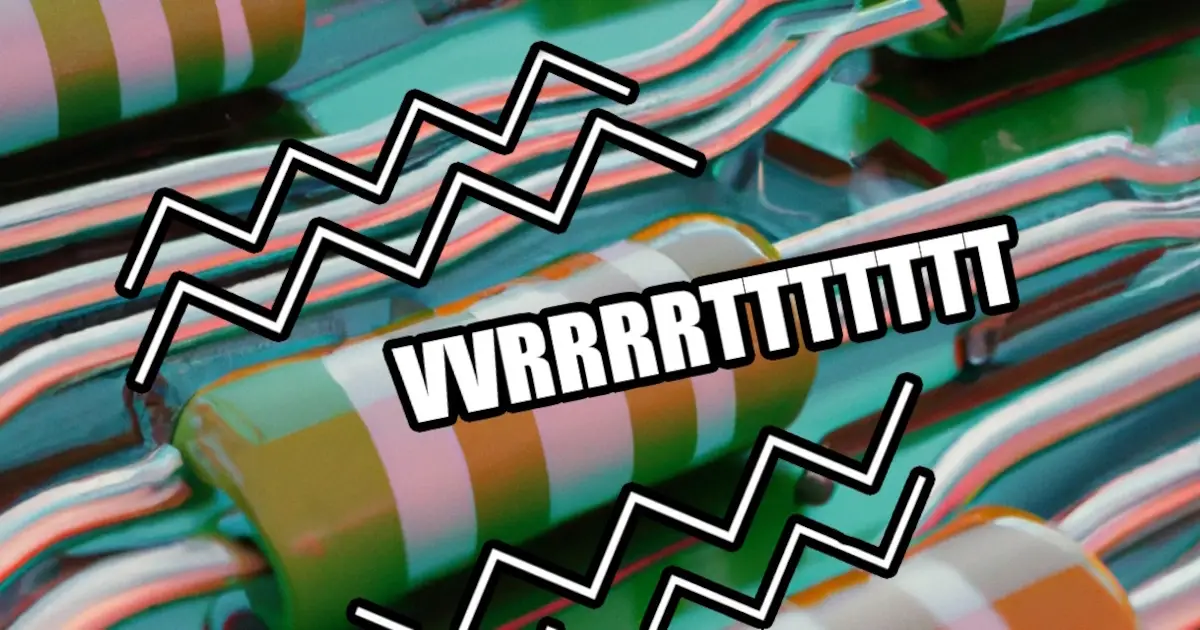Related Topics
The Thermal Hum of the Universe
Relay manufactures hate this one simple trick that makes your “sealed” relays last longer! Except TE connectivity who has an note about this relay feature.
Other Resources
Circuit Break Podcast
Webinars
Videos
Tour MacroFab's ITAR-Compliant Facility
February 18, 2022, Episode #316
Circuit grounding – How big is too big?
- Stephen has a new design that is trying something very odd
- Planes that connect to the star
- Difference between different grounding techniques
- 8 layer monster board with multiple power supplies – low noise
- Parker likes to think of these problems as the extremes of certain examples as a way to think about what happens
- Take a “star” topography ground for instance
- Make the trace lengths that connect to the “star” really small
- Make the star point really “big”
- This is vias connections direct to a plain
- Take a “star” topography ground for instance
Coilcraft has “Elevated” inductors
- Parker found this tweet by Lukas Henkel showing coilcraft has inductors that are elevated off the PCB which allows placing parts under the component
- Coilcraft XAR7030 series
- Unique off-the-board design provides 1.5 mm clearance for parts to be mounted underneath
- Magnetically shielded for high density applications
- Torex Semiconductor has combined switch mode controllers and inductors to build micro DC/DC converters
- PCB Assembly problems?
- Should XYRS now have a Z height?
- This is typically on the CMs to “get it right”
- Probably best to let your CM know what your doing in this case to reduce confusion
About the Hosts

Parker Dillmann
Parker is an Electrical Engineer with backgrounds in Embedded System Design and Digital Signal Processing. He got his start in 2005 by hacking Nintendo consoles into portable gaming units. The following year he designed and produced an Atari 2600 video mod to allow the Atari to display a crisp, RF fuzz free picture on newer TVs. Over a thousand Atari video mods where produced by Parker from 2006 to 2011 and the mod is still made by other enthusiasts in the Atari community.
In 2006, Parker enrolled at The University of Texas at Austin as a Petroleum Engineer. After realizing electronics was his passion he switched majors in 2007 to Electrical and Computer Engineering. Following his previous background in making the Atari 2600 video mod, Parker decided to take more board layout classes and circuit design classes. Other areas of study include robotics, microcontroller theory and design, FPGA development with VHDL and Verilog, and image and signal processing with DSPs. In 2010, Parker won a Ti sponsored Launchpad programming and design contest that was held by the IEEE CS chapter at the University. Parker graduated with a BS in Electrical and Computer Engineering in the Spring of 2012.
In the Summer of 2012, Parker was hired on as an Electrical Engineer at Dynamic Perception to design and prototype new electronic products. Here, Parker learned about full product development cycles and honed his board layout skills. Seeing the difficulties in managing operations and FCC/CE compliance testing, Parker thought there had to be a better way for small electronic companies to get their product out in customer's hands.
Parker also runs the blog, longhornengineer.com, where he posts his personal projects, technical guides, and appnotes about board layout design and components.

Stephen Kraig
Stephen Kraig is a component engineer working in the aerospace industry. He has applied his electrical engineering knowledge in a variety of contexts previously, including oil and gas, contract manufacturing, audio electronic repair, and synthesizer design. A graduate of Texas A&M, Stephen has lived his adult life in the Houston, TX, and Denver, CO, areas.
Stephen has never said no to a project. From building guitar amps (starting when he was 17) to designing and building his own CNC table to fine-tuning the mineral composition of the water he uses to brew beer, he thrives on testing, experimentation, and problem-solving. Tune into the podcast to learn more about the wacky stuff Stephen gets up to.
Special thanks to whixr over at Tymkrs for the intro and outro!
Related Podcasts

The Thermal Hum of the Universe
Relay manufactures hate this one simple trick that makes your “sealed” relays last longer! Except TE connectivity who has an note about this relay feature.
About MacroFab
MacroFab offers comprehensive manufacturing solutions, from your smallest prototyping orders to your largest production needs. Our factory network locations are strategically located across North America, ensuring that we have the flexibility to provide capacity when and where you need it most.
Experience the future of EMS manufacturing with our state-of-the-art technology platform and cutting-edge digital supply chain solutions. At MacroFab, we ensure that your electronics are produced faster, more efficiently, and with fewer logistic problems than ever before.
Take advantage of AI-enabled sourcing opportunities and employ expert teams who are connected through a user-friendly technology platform. Discover how streamlined electronics manufacturing can benefit your business by contacting us today.